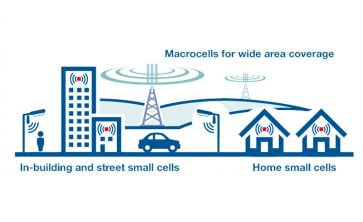How mobile networks are built
Mobile Devices and Radio Signals
Mobile phones work by sending and receiving low-power radio signals, similar to a two-way radio system. These signals are transmitted to antennas attached to radio equipment, commonly called mobile phone base stations. The base stations are connected to the wider mobile and fixed phone network, allowing calls and data to be passed along to other devices and services.
Cells and Network Coverage
Each base station provides coverage to a defined geographic area known as a cell. Cells are arranged in a pattern similar to a honeycomb, which is why mobile networks are often called cellular networks.
The placement of a base station within a cell is influenced by several factors:
– Geography and physical obstacles: Hills, trees, and buildings can weaken or block radio signals.
– Traffic demand: The expected number of calls or amount of data usage in the area.
– Frequency: Different radio frequencies travel differently, affecting how far a signal can reach.
Mobile signals do not need a direct line of sight, but they do travel more effectively when there are fewer obstructions. Radio waves can bend, reflect, or diffract around obstacles, but tall buildings, dense vegetation, and hilly terrain can reduce the strength of the signal. Base stations are therefore carefully positioned to make the best use of the terrain and minimize areas of weak coverage.
Managing Network Traffic
Each base station can handle only a limited amount of calls and data. In areas with high usage, such as city centers or densely populated neighborhoods, multiple base stations are needed to manage the traffic. These can include:
– In-building solutions: Systems designed to provide strong coverage within a specific building.
– Small cells: Low-power base stations covering smaller areas to add extra capacity where many devices are active. Small cells have replaced older “microcell” technology but operate in a similar way.
Base Station Placement in Low-Traffic Areas
In areas with lower mobile and data use, base stations are often placed on elevated structures like hills, towers, or poles. This helps the radio signals cover a larger area efficiently, reducing the need for additional base stations.


